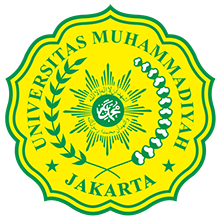PREPARASI EKSTRAK BAYAM MERAH (AMARANTHUS GANGETICUS) UNTUK APLIKASI DYE SENSITIZED SOLAR CELL (DSSC)
Abstract
Solar energy is the most beneficial renewable energy, because it is not limited, not called by geographical location, and not environmental pollution. Solar energy can be converted into electrical energy using Solar Cells. Dye Sensitized Solar Cell (DSSC) is a form of renewable energy with several advantages, such as low fabrication costs and high photoelectric efficiency. The structure of the DSSC device consists of five components, namely conductive substrate, semiconductor filmization, sensors, redox in the form of electrolytes and opposing electrodes. The proper use of semiconductor materials and photosensitizers can produce high photoelectric power. Included in the DSSC application, dyestuff is a component that has an important role. In this study, dye extraction was done using red spinach leaves (Amaranthus gangeticus) with maceration techniques. Red spinach is one potential that can be developed into dyes because the red color of spinach contains natural pigments. Red spinach extract uses maceration techniques because of simple and sophisticated workmanship that is simple. The results of the red spinach extract were then tested using UV-Vis, FTIR, and cyclic voltammetry.
Keywords
Full Text:
PDFReferences
A. Lim, N. T. R. N. Kumara, A. L. Tan, A. M. Mirza, R. L. N. Chandrakanthi, M .I. Petra, L. C. Ming, G. K. R. Senadeera, P. Ekanayake, (2015). Potential natural sensitizers extracted from the skin of Canarium odontophyllum fruits for dye-sensitized solar cells, Spectrochim. Acta Mol. Biomol. Spectrosc. 138, pp.596-602.
Agarry, S.E., dan Jimoda, L.A. (2013). Application of Carbon-Nitrogen Supplementation from Plant and Animal Sources in In-situ Soil Bioremediation of Diesel Oil: Experimental Analysis and Kinetic Modelling. Journal of Environmental and Earth Science.
Ananth S, Vivek P, Arumanayagam T, Murugakoothan P. (2014). Natural dye extract of lawsonia inermis seed as photo sensitizer for titanium dioxide based dye sensitized solar cells. Spectrochim Acta Part A: Mol Biomol Spectros;128:420–6.
Ariyanto, T., (2013), Analisis Efisiensi Dye sensitized Solar Cell (DSSC) Menggunakan Kulit Buah Naga Merah dan Kulit Buah Naga Merah, Program Studi Teknik Fisika Fakultas Teknologi Industri ITB, Bandung.
Artono, M., (2013), Fabrikasi Dye sensitized Solar Cell Menggunakan Natural Dye sebagai Alternatif Dye Ruthenium, Program Studi Teknik Fisika Fakultas Teknologi Industri ITB, Bandung.
B. Caratao, E. Carneiro, P. Sa, B. Almeida, S. Carvalho, J. Nanotecnol. (2014) 472132 (pp. 5)
Bhardwaj, N. & Kundu, S.C. (2010). Electrospinning: A Fascinating Fiber Fabrication Technique. Biotechnology Advances. 28: 325-347.
Chiba, Y., Islam, A., Watanabe, Y., Komiya, R., Koide, N., & Han, L.Y. (2006). Dye-sensitized solar cells with conversion efficiency of 11.1%. Jpn. J. Appl. Phys. 45 L638-L640.
G. Calogero, J.-H. Yum, A. Sinopoli, G. Di Marco, M. Grätzel, M.K. Nazeeruddin, (2012). Anthocyanins and betalains as light-harvesting pigments for dye-sensitized solar cells, Sol. Energy 86 (5), pp. 1563–1575.
H. Zhou, W. Liqiong, G. Yurong, M. Tingli, (2011). Dye-sensitized solar cells using 20 natural dyes as sensitizers, J. Photochem. Photobiol. A Chem. 219, pp.188–194.
Hagfeldt, G. Boschloo, L. Sun, L. Kloo, H. Pettersson, (2010). Dye-sensitized solar cells, Chem. Rev. 110, pp.6595–6663.
Huang, Z.M., Zhang, Y.Z., Kotaki, M., & Ramakhrisna, S. (2003). A Review On Polymer Nanofiber by Electrospinning and Their Application In Nanocomposites. Composites Science and Technology. 63(15). 2222-2253.
J. Uddin, J. M. M. Islam, E. Karim, S. M. M. Khan, S. Akhter, E. Hoque, M. A. Khan, (2015). Preparation and characterization of dye sensitized solar cell using natural dye extract from Amaranthus gangeticus (Amaranthus sp) as sensitizer, Int. J. Thin Fil. Sci. Tech. 4, pp.141-146.
K. Woncharee, V. Meeyoo, S. Chavadej, (2005). Dye-sensitized solar cell using natural dyes extracted from rosella and blue pea flowers, Sol. Energ. Mat. Sol. Cells 91, pp.566-571.
K. Wongcharee, V. Meeyoo, S. Chavadej, (2007). Dye sensitized solar cell using natural dyes extracted from rosella and blue pea flowers, Sol. Energy Mater. Sol. Cells 91, pp. 566–571.
Kementerian Energi dan Sumber Daya Mineral. (2015). Statistik Ketenagalistrikan. Jakarta.
L. K. Singh, T. Karlo, A. Pandey, (2014). Performance of fruit extract of Melastoma malabathricum L.as sensitizer in DSSCs, Spectrochim. Acta Mol. Biomol. Spectrosc. 118. 938-943.
Lai, W.H., Sub, Y.H., Teoh, L.G., dan Hon, M.H. (2007). Commercial and Natural Dyes as Photosensitizers for a Water-Based Dye-Sensitized Solar Cell Loaded with Gold Nanoparticles, Elsevier Journal of Photochemistry and Photobiology A: Chemistry, 195, 307–313.
Lee, D.Y., Kim, B.Y., Lee, S.J., Lee, M.H., Song, Y.S., Lee, J.Y., (2006). Titania Nanofiber Prepared by Electrospinning. J. Korean Phys Soc. 48: 1686-1690.
Lim A, et al. (2015). Potential natural sensitizers extracted from the skin of Canarium odontophyllum fruits for dye-sensitized solar cells. Spectrochim Acta Part A: Mol Biomol Spectrosc 138(0):596–602.
Lim A, Pg Damit DNFB, Ekanayake P. (2015). Tailoring of extraction solvent of Ixora coccinea flower to enhance charge transport properties in dye-sensitized solar cells. Ionics 21(10):2897–904.
M. Gratzel, Dye-sensitized solar cells, J Photochem Photobiol C: Photochem Rev 4 (2003) 145–153.
M.L. Parisi, S. Maranghi, R. Basosi, (2014). The evolution of the dye sensitized solar cells from Gratzel prototype to up-scaled solar applications: a life cycle assessment approach, Renew Sustain Energy Rev. 39, pp.124-138.
Maulina, Anna., Hardeli., Bahrizal., (2014), “Preparasi Dye Sensitized Solar Cel Menggunakan Ekstrak Antosianin Kulit Buah Manggis (Garcinia Mangostana L)” Jurnal Sainstek Vol. VI No. 2: 158-167
Muhaimin, M., Astuti, W.D., Sosiati, H., & Triyana, K. (2014). Fabrikasi Nanofiber Komposit Nanoselulosa/ PVA dengan Metode Elektrospining. Fisika, FMIPA UGM: Yogyakarta.
N.A. Ludin, M.A.M. Al-Alwani, A.B. Mohamad, A.A.H. Kadhum, K. Sopian, N.S. Abdul Karim, (2014). Review on the development of natural dye photosensitizer for dye-sensitized solar cells, Renew. Sustain. Energy Rev. 31, pp.386–396.
Park NG, Van De Lagemaat J, Frank AJ. (2000). Comparison of dye-sensitized rutile- ananatase-based TiO2 solar cells. J Phys Chem B. 104(38):8989–94.
Patrocínio, A.O.T., Mizoguchi, S.K., Paterno, L.G., Garcia, C.G., dan N.Y. Murakami, N.Y. (2009). Efficient and Low Cost Devices for Solar Energy Conversion: Efficiency and Stability of Some Natural-Dye-Sensitized Solar Cells, Journal of Synthetic Metals, 159, 2342–2344.
S. Chuangcote, T. Sagawa, S. Yoshikawa, Applied Physics Letters 93 (2008) 033310.
Sidik, Moch L., Risanti, D D., Sawitri., D., (2015), “Sintesis Zat Warna Komposit Berbasis Anthocyanin dari Ekstrak Kulit Manggis, Wortel, dan Kunyit sebagai Fotosensitiser pada Dye Sensitized Solar Cell (DSSC)” Paper And Presentation of Physics Engineering RSF 621.312 44 Sid s.
Tsai, C.H., Chuang, P.Y., dan Hsu, H.L. (2018). Adding graphene nanosheets in liquid electrolytes to improve the efficiency of dye-sensitized solar cells, Materials Chemistry and Physics 207, pp.154-160.
Wallace, G. G., Innis, P.C., & Mauuire, L.A.P.K. (2004). In Encyclopedia of Nanoscience and Nanotechnology. American Scientific Publisher. Los Angeles.
World Energy Council. (2016). World Energy Resources. World Energy Council Report, London.
Y. Chiba, A. Islam, Y. Watanabe, R. Komiya, N. Koide, L.Y. Han, (2006). Dye sensitized solar cells with conversion efficiency of 11.1%, Jpn. J. Appl. Phys. 45, pp.638–640.
Zhang, H., & Banfield, J.F. (2000). Understanding Polymorphic Phase Transformation Behavior during Growth of Nanocrystalline Aggregates Insights from TiO2. J. Phys Chem B, vol. 104, pp. 3481.
DOI: https://doi.org/10.24853/jurtek.14.2.147-154
Refbacks
- There are currently no refbacks.





















